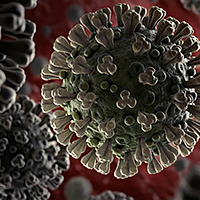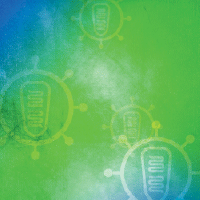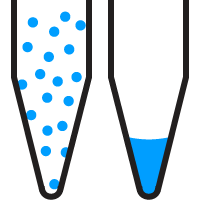Human ACE2 293T Cell Line

Entry of SARS-CoV-2 into host cells is mediated by interaction between spike proteins and ACE2. To aid the study of virus-receptor interactions and the development of therapies for COVID-19, we have developed a stable HEK-derived cell line that expresses ACE2 under the CMV promoter. The cell line has been confirmed to express ACE2 at consistently high levels across multiple passages and is efficiently transduced by SARS-CoV-2 pseudovirus generated using Lenti-X SARS-CoV-2 Packaging Single Shots.
Entry of SARS-CoV-2 into host cells is mediated by interaction between spike proteins and ACE2. To aid the study of virus-receptor interactions and the development of therapies for COVID-19, we have developed a stable HEK-derived cell line that expresses ACE2 under the CMV promoter. The cell line has been confirmed to express ACE2 at consistently high levels across multiple passages and is efficiently transduced by SARS-CoV-2 pseudovirus generated using Lenti-X SARS-CoV-2 Packaging Single Shots.
ACE2 is a zinc-containing metalloenzyme located on the surface of endothelial and other cell types. This transmembrane protein converts angiotensin I to angiotensin 1–9, a 9-amino acid peptide with anti-hypertrophic effects in cardiomyocytes, and angiotensin II to angiotensin 1–7, which then acts as a beneficial vasodilator and anti-proliferation agent.
The Human ACE2 293T Cell Line was engineered by transduction of an HEK cell line with lentivirus encoding human ACE2. The cell line was subcloned for high expression of ACE2, and confirmed via RT-qPCR.
Overview
- HEK cell line engineered for constitutive expression of ACE2 under the CMV promoter
- Consistently high expression of ACE2, confirmed across multiple passages
- Efficiently transduced by SARS-CoV-2 pseudovirus (e.g., produced using Lenti-X SARS-CoV-2 Packaging Single Shots)
More Information
Applications
- SARS-CoV-2 neutralization studies
- Analysis of virus-receptor interactions and viral entry
Additional product information
Please see the product's Certificate of Analysis for information about storage conditions, product components, and technical specifications. Please see the Kit Components List to determine kit components. Certificates of Analysis and Kit Components Lists are located under the Documents tab.
Takara Bio USA, Inc.
United States/Canada: +1.800.662.2566 • Asia Pacific: +1.650.919.7300 • Europe: +33.(0)1.3904.6880 • Japan: +81.(0)77.565.6999
FOR RESEARCH USE ONLY. NOT FOR USE IN DIAGNOSTIC PROCEDURES. © 2025 Takara Bio Inc. All Rights Reserved. All trademarks are the property of Takara Bio Inc. or its affiliate(s) in the U.S. and/or other countries or their respective owners. Certain trademarks may not be registered in all jurisdictions. Additional product, intellectual property, and restricted use information is available at takarabio.com.






